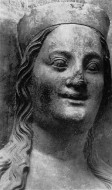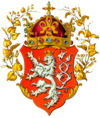
John the Blind or John of Luxembourg, was the Count of Luxembourg from 1313 and King of Bohemia from 1310 and titular King of Poland. He is well known for having died while fighting in the Battle of Crécy at age 50, after having been blind for a decade. In his home country of Luxembourg, he is considered a national hero. Comparatively, in the Czech Republic, Jan Lucemburský is often recognized for his role as the father of Charles IV, Holy Roman Emperor, one of the more significant Kings of Bohemia and one of the leading Holy Roman Emperors.
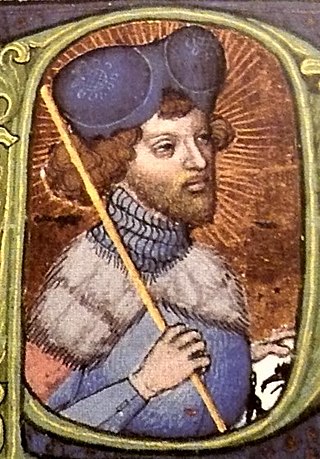
Wenceslaus IV, also known as Wenceslaus of Luxembourg, was King of Bohemia from 1378 until his death and King of Germany from 1376 until he was deposed in 1400. As he belonged to the House of Luxembourg, he was also Duke of Luxembourg from 1383 to 1388.

Charles IV, also known as Charles of Luxembourg, born Wenceslaus, was Holy Roman Emperor from 1355 until his death in 1378. He was elected King of Germany in 1346 and became King of Bohemia that same year. He was a member of the House of Luxembourg from his father's side and the Bohemian House of Přemyslid from his mother's side; he emphasized the latter due to his lifelong affinity for the Bohemian side of his inheritance, and also because his direct ancestors in the Přemyslid line included two saints.

Elizabeth of Bohemia was a princess of the Bohemian Přemyslid dynasty who became Queen of Bohemia as the first wife of King John the Blind. She was the mother of Emperor Charles IV, King of Bohemia, and a daughter of Judith of Habsburg, member of the House of Habsburg.

Sophia of Bavaria was a Queen of Bohemia and the spouse of Wenceslaus, King of Bohemia and King of the Romans. She was briefly interim regent of Bohemia after the death of Wenceslaus in 1419.

Wenceslaus I was the first Duke of Luxembourg from 1354. He was the son of John the Blind, King of Bohemia, and Beatrice of Bourbon.
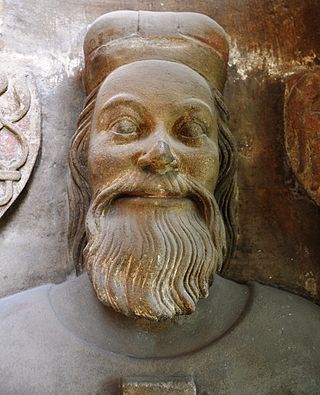
John Henry of Luxembourg, a member of the House of Luxembourg, was Count of Tyrol from 1335 to 1341 and Margrave of Moravia from 1349 until his death.
Henry XIV, Duke of Bavaria, was Duke of Lower Bavaria.

Master Theodoric, in Latin Magister Theodoricus was a Czech painter. He is the best documented Gothic painter in Bohemia. He was the favourite court painter of Charles IV, Holy Roman Emperor. and the first Bohemian painter whose name can be linked to a body of work. Theodoric is considered the chief representative of the phase of International Gothic known as "the Soft style". His masterpiece is the Chapel of the Holy Cross at Charles' newly completed Karlštejn Castle, near Prague, containing a large series of slightly over-lifesize half-length panel portraits of saints and other notable figures on a gold ground. The whole decoration of the chapel was commissioned in 1359 and completed over a number of years. The decoration of the Chapel of the Holy Cross was unique and unprecedented at the north of the Alps. Theodoric's oeuvre is not comparable to anything in European art after the mid-14th century (1360th).

Beatrice of Bourbon was a French noblewoman. A member of the House of Bourbon, she was by marriage Queen of Bohemia and Countess of Luxembourg.
Margaret of Bohemia was the younger daughter of Holy Roman Emperor Charles IV and his fourth wife Elizabeth of Pomerania. She became Burgravine of Nuremburg through marriage.
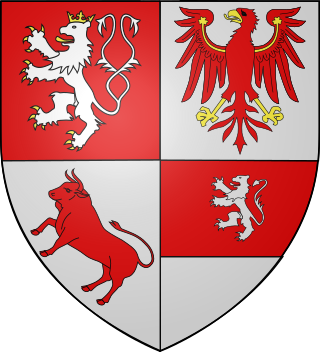
John of Görlitz was a member of the House of Luxembourg and the only Duke of Görlitz (Zgorzelec) from 1377 until his death.

The history of the Czech lands in the High Middle Ages encompasses the period from the rule of Vladislav II to that of Henry of Bohemia (c.1265–1335). The High Middle Ages includes the 11th, 12th, and 13th centuries. It was preceded by the Early Middle Ages and followed by the Late Middle Ages, which ended about 1500. The High Middle Ages produced a number of intellectual, spiritual and artistic works and saw the rise of ethnocentrism, which evolved into nationalism. The rediscovery of the works of Aristotle led Thomas Aquinas and other thinkers of the period to develop the instructional method of scholasticism. In architecture, many notable Gothic cathedrals were built or completed during this era.

Czech Gothic architecture refers to the architectural period primarily of the Late Middle Ages in the area of the present-day Czech Republic.

The Votive Panel of Jan Očko of Vlašim is a Gothic panel painting now in the National Gallery in Prague, Czech Republic. It is one of the most important artworks made in medieval Bohemia. The panel was painted for the Prague archbishop Jan Očko of Vlašim who is depicted kneeling before St. Adalbert of Prague in the lower part of the picture. The author(s) of the painting is (are) not known. The style of the painting stands between the works of Theodoric of Prague and the Master of the Třeboň Altarpiece.

The Zbraslav Madonna comes from the parish church of St James the Greater in Zbraslav. It is on long-term loan at the permanent exhibition of the National Gallery in Prague.
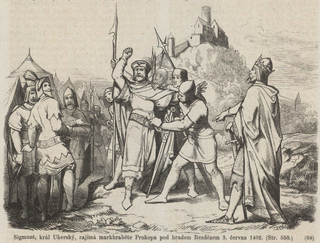
Prokop of Moravia, or Prokop of Luxembourg, a member of the House of Luxembourg, was Margrave of Moravia from 1375 until his death in 1405 and the provincial governor of the kingdom.
Henry III of Rosenberg was a Bohemian nobleman who served as Supreme Burgrave of the Kingdom of Bohemia between 1396 and 1398, and between 1400 and 1403 in the Kingdom of Bohemia, an Imperial State in the Holy Roman Empire.

The Female Saint of Dolní Vltavice is a bust of an unknown saint made in a Prague carving workshop between 1380 and 1390. It is on display in the permanent exhibition of the Aleš South Bohemian Gallery in Hluboká nad Vltavou.
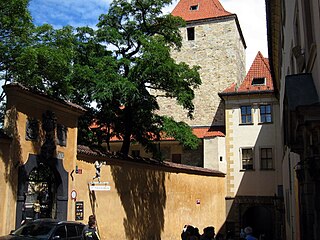
The Supreme Burgrave of the Kingdom of Bohemia, originally the Burgrave of Prague or the Burgrave of Prague Castle was the most important land official of the Kingdom of Bohemia. They were the head of the Bohemian Diet and the Bohemian land court, and commander of the Zemská hotovost.
